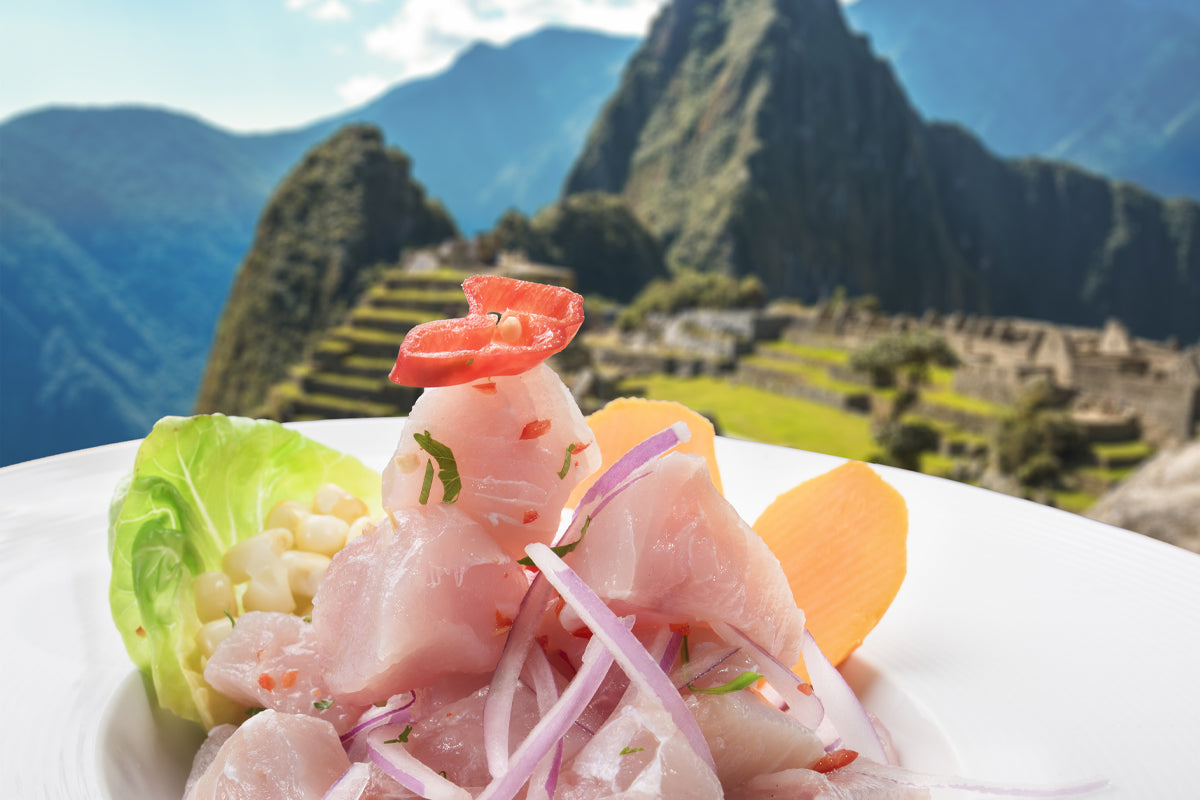Andean Ceviche: A Fusion of Traditional and Modern Gourmet Flavors
Andean ceviche is one of the jewels of South American cuisine, where tradition meets modern innovation. This iconic dish, renowned for its freshness and vibrant flavor combination, captures not only the essence of the sea but also the rich cultural heritage of the Andean region. Today, ceviche is constantly reinvented, incorporating gourmet elements that elevate its presentation and flavor. This blog explores the various aspects that make Andean ceviche a unique and fascinating culinary experience.
Historical Origins of Andean Ceviche
Ceviche has deep roots in Andean culture, dating back to pre-Columbian civilizations. Ancient coastal communities already utilized methods for preserving raw fish by employing acids from citrus fruits like lime. With the arrival of the Spanish, the recipe was enriched by incorporating new ingredients, blending indigenous techniques with European traditions. This evolution has led to various ceviche variants, each with its distinctive character, reflecting regional identity and adaptation to contemporary flavors. Thus, Andean ceviche becomes a symbol of cultural resilience and a link to the past.
Key Ingredients in Andean Ceviche
The ingredients are essential for achieving the authenticity of Andean ceviche. Fresh fish, such as trout or grouper, is fundamental as it provides flavor and texture. In addition, the use of Andean chili peppers, red onion, and lime juice creates a perfect balance between acidity and spiciness. The selection of fresh, high-quality ingredients not only guarantees a delicious dish but also respects the region's biodiversity. Moreover, the trend toward organic and local produce is reflected in modern ceviche, which aims to highlight the richness of Andean gastronomy. This approach allows chefs to create ceviches that are both authentic and sustainable, attracting discerning diners.
Preparation and Marination Techniques
Preparing Andean ceviche involves a series of steps that require precision and care. The marination technique is key, as the fish is soaked in a mixture of lime juice, salt, and chili for a specified time, allowing the flavors to harmonize. The temperature and marination time are crucial for achieving the ideal fish texture, which should be firm yet tender. Contemporary chefs experiment with marination times, incorporating molecular cooking influences to intensify flavors. This combination of tradition and modernity in ceviche preparation offers a culinary experience that is both authentic and avant-garde.
The Influence of Gourmet Cuisine on Ceviche
Gourmet cuisine has revitalized Andean ceviche, transforming a traditional dish into a culinary masterpiece. Renowned chefs incorporate innovative techniques and creative presentations that elevate ceviche to a new level. For example, the use of spherification, foams, and emulsions allows exploration of new textures and flavors. Additionally, unusual pairings, such as the inclusion of tropical fruits or fresh herbs, bring freshness and originality. This evolution not only enriches the gastronomic offering but also attracts a new generation of diners seeking unique culinary experiences. Gourmet ceviche thus becomes an expression of Andean culinary creativity.
Ceviche's Role in Andean Culture
Andean ceviche is not just a dish but a central element in the culture and traditions of Andean communities. This delicacy is shared during celebrations, family gatherings, and festivals, symbolizing unity and festivity. It is often accompanied by typical dishes such as yucca or corn, creating a feast that highlights the region's diverse flavors. The cultural significance of ceviche is reflected in its representation at food festivals, where chefs and enthusiasts gather to pay homage to this dish. Thus, ceviche becomes a link between generations, preserving the history and culinary traditions of the Andean region.
Nutritional Benefits of Ceviche
Andean ceviche offers a variety of nutritional benefits, making it a healthy choice. Made primarily with fish, it is an excellent source of high-quality protein and omega-3 fatty acids, essential for cardiovascular health. Additionally, fresh ingredients like lime and chili are rich in vitamins and antioxidants, contributing to a balanced diet. This focus on nutrition makes ceviche appealing to those looking to maintain their health without sacrificing flavor. Therefore, Andean ceviche not only satisfies the palate but also promotes a healthy lifestyle.
Sustainability in Ceviche Preparation
Sustainability has become a crucial aspect of preparing Andean ceviche. With the growing awareness of responsible fishing practices and the use of local ingredients, many chefs are committed to working with suppliers who practice sustainable methods. This ensures that ceviche is not only delicious but also ethical and environmentally friendly. The integration of organic and seasonal ingredients reinforces this commitment, highlighting the importance of caring for natural resources. In this way, Andean ceviche positions itself as a dish that not only celebrates the richness of culinary tradition but also aligns with current sustainability trends.
Andean ceviche is a dish that represents the fusion of traditional and modern flavors, reflecting the rich cultural heritage of the Andean region. Its evolution over time, the quality of its ingredients, and innovations in its preparation make it a symbol of contemporary gastronomy. As it moves toward a sustainable future, ceviche remains a delicacy that not only satisfies the palate but also respects the environment and promotes health. This dish, in its diversity and versatility, continues to captivate diners around the world.
Sources Consulted
- Hemming, John. The Conquest of the Incas. Macmillan, 2012.
- Rowe, John Howland. "Inca Culture at the Time of the Spanish Conquest." Handbook of South American Indians, 1946.
- Silverman, Helaine, and William H. Isbell (eds.). Handbook of South American Archaeology. Springer, 2008.
- Lavallée, Danièle. The First South Americans: The Colonization of a Continent from the Earliest Evidence to the High Culture. University of Utah Press, 2000.
Article originally published on [10/13/2022], updated on [10/23/2024]


